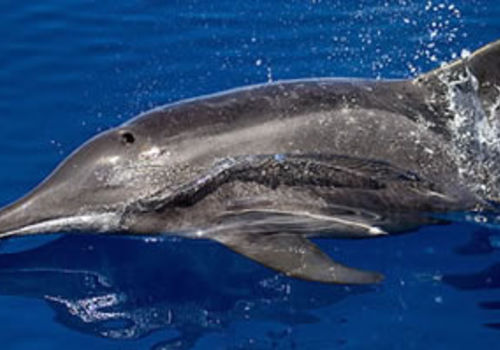
Rough toothed dolphin
Steno bredanensisRough toothed dolphin
Introduction: The rough-toothed dolphin (Steno bredanensis) is not surprisingly so-called because it has faint ridges on the crowns of the teeth of the upper and lower jaw. The name Steno is Greek for narrow, and refers to the beak. It is a fairly large-sized mammal that frequents deep, warm tropical waters. A characteristic feature is the conical head and slender nose. Schools of 50 are common as are larger pods of several hundred or more.
They have been observed in the company of other species such as pilot whales, offshore bottlenose, spotted and spinner dolphins, but their flippers are set further back than the latter 3 species. They are not associated with bow-riding as is the case with other dolphins, but do 'skim', which is swimming with their heads and chin above the surface of the ocean.
Distribution: Atlantic coastal areas from Walvis Bay northwards including Möwe Bay on the Skeleton Coast.
Diet: Cephalopods, fish, squid and molluscs.
Colouring: Dark grey to purplish on the back, with yellowish white or pink blotches on the flanks. Lips, snout and ventral surface are white.
Size: Males may reach 2.5m, females 2.25m. Weight: 145kg.
Klein Windhoek

